| TIME |
AGENDA |
|
| 09:00 |
Welcoming Speech & Opening Remarks by Event Director |
|
| 09:05 |
Opening Address by Forum Chairman |
|
|
- Highlights on Forum Day 1 Key Sessions
|
|
| 09:15 |
Building Plant Reliability & Predictability with Growing Throughput Demands & Tighter Maintenance Schedules |
|
Case Study
|
- The demands for higher and greater output with less downtime and the need for predictability and longevity to improve plant efficiency and availability
- A coordinated system approach — Improve plant reliability and availability across all areas of plant operation by identifying problems areas, documenting known conditions and moving on to producing full trial and performance criteria, giving a basis for plant improvement through continued improvement
- Best practices in wearing solutions for mining, quarries, oil & gas, power and other high wearing applications
- Case study: Critical cross beam neared failure in a coal handling preparation plant in Queensland
- Case study: Concrete repair and safety in metal processing plants
|
|
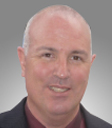 |
David Greig, Application Engineer, Henkel Australia Pty Ltd
David started his career in fabrication 36 years ago with experience across mining, food (sugar mills) and transport. He has worked in varied size companies, delivering successful custom solutions for diverse clientele. Joining Henkel Australia in 2014 as an Application Engineer for brand LOCTITE, his expertise has grown to include wearing compounds and their applications in asset protection- particularly in mining industries. He continues to develop and implement cutting edge systems and products to meet and exceed the extreme demands of heavy industries, with keen focus on increasing reliability and production for Henkel’s partners. He also facilitates workshops in Papua New Guinea. |
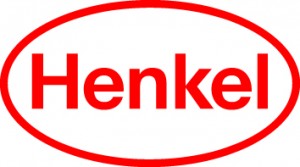 |
| 10:00 |
Wood Group’s LNG Projects Case Study – Inspection Planning Using RBI and IOW Best Practice |
|
Case Study
|
- Corrosion management for plant and topside facilities with Risk Based Inspection (RBI) and Integrity Operating Windows (IOW) Surveillance System. Case example on operating LNG Plants
- Work scoping based on RBI study: How to determine inspection frequency, technique and coverage, based on risk and degradation mode?
- Process monitoring with IOWs and its direct impact on inspection strategy
- Best practices you should be doing now to reap the significant potential savings
|
|
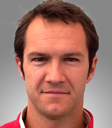 |
Romain Kabs, Asset Integrity Engineer, Wood Group Integrity Management
Romain has been working in the Oil and Gas Industry as an Asset Integrity Engineer for 8 years, supporting LNG projects and operating plants in Western Australia. His experience touches on all aspect of the integrity management, from defining the corrosion management plan, assessing the inspection strategy to implementing its execution. One of his biggest achievements is the Integrity Operating Windows (IOW) Surveillance System he developed for a Wood Group client to monitoring all parameters that affect the integrity and damage mechanism on pressure static equipment. This innovative strategy is aligned with API 584 recommended practice.
|
 |
| 10:45 |
Morning Refreshments & Networking |
|
| 11:00 |
The Real Value in Reverse FMEA |
|
|
- Why Reverse FMEA?
- What about the other known failure modes?
- What about the other unknown failure modes?
- When to deal with mitigating task effectiveness?
- So where is the real value?
|
|
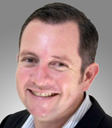 |
Craig Singleton, Former National Planning Manager, APA Group
Craig has over 30 years’ experience across Operations, Maintenance, Reliability Engineering and Asset Management roles from Tradesman, supervisor, and superintendent, to Engineer, Senior Engineer, Principal Engineer, Consultant and Manager within Australia, France and China. Mostly Mining and Minerals Processing within Coal, Gold and Copper. Plus experience within Military and Defence through the RAAF, where he completed his trade qualifications, to Aluminium Refining, smelting and rolling, Sugar, Manufacturing, and QLD’s Industrial Maintenance Round Table Facilitator for SIRF, until his most recent role within the Oil and Gas sector, being the former APA National Manager for Maintenance Plannin g and Scheduling.
|
|
| 11:45 |
Aircraft and Engine Health Monitoring Tools to Assist Airline On-time Reliability and Performance |
|
|
- Proactive OEM EHM / AHM tools available for Aircraft Engineers
- Quantifying and substantiation of on time performance (OTP) and efficiency gains – An elusive measurable
- The requirement for continual training and support
|
|
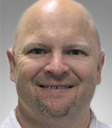 |
Mark Petersen, Duty Maintenance Watch Engineer, Virgin Australia
With a passion for aviation, Mark Petersen has moved domestically and internationally to pursue his goal Of leading and directing airline maintenance activities. Living and working in Australia, Mauritius, and New Zealand, He now resides in Brisbane with his wife and two beautiful girls. Initially graduating from Ansett Australia as a trade Qualified Aircraft Maintenance Engineer, he has become a multi licensed Engineer with Australian and international certification privileges. Emirates, Air Mauritius and Virgin Australia have been well served by his enthusiasm, dedication and commitment. More recently, He has completed his Masters in Aviation management at Griffith University, majoring in leadership, economics and safety and fatigue management systems. He believes maintaining superior health and fitness allows him to enthusiastically and energetically work and play at consistently High levels.
|
 |
| 12:30 |
Lunch & Networking |
|
| 13:45 |
A Critical Review: Aligning Reliability with Targets and Resources |
|
|
- The study shows the importance of approaching continuous improvement activities as a system, rather than as a departmental function
- A number of metrics are examined to determine what represents the best what adds value. Traditional indicators such as OEE, availability and uptime, among others are also studied
- The study challenges prevailing concepts of equipment reliability. Instead it uses statistical distributions to workout whether or not the productive units are stable or not and therefore reliable
- Finally, the study moves towards finding out the reasons for instability, enabling underlying systemic issues to be addressed with an impact on overall asset effectiveness
|
|
 |
Andres Yep, Engineering Team Lead – Maintenance, Karara Mining Ltd.
Andres has over 18 years engineering experience across mining, manufacturing, and oil and gas industries. He held key roles in maintenance, engineering, project engineering, maintenance management, and plant engineering at different levels. He developed specialized skills through this experience in continuous improvement, business optimization, and systemic change management focusing on technical and managerial aspects of change. Currently in the third year of his doctorate degree majoring in industrial optimization. He is also working full time as an engineering team leader for a magnetite producer located north of Perth in Western Australia |
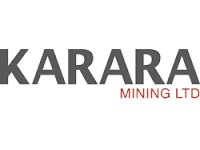 |
| 14:30 |
Digitally Driven Opportunities in Reliability Assessment |
|
|
- The accelerating advance in digital equipment and software systems are having a profound effect on the collection and analysis of asset performance data.
- A growing trend towards remote collection of reliability data using on-board sensors driven by the improved economics of sensor equipment and the ability to transmit large packages of data using wireless systems;
- The increasing use of bespoke solutions tailored for particular reliability concerns or the need to collect specific sets of data; and;
- The inclusion of reliability assessment systems will occur much earlier in the asset design or procurement phase
- Ongoing development presents asset management personnel with a significant opportunity to significantly improve the asset management decision process and reduce the cost of asset maintenance
|
|
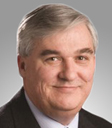 |
Neil Naismith, Technical Director, Aurecon
Neil in his capacity as the Technical Director Asset Management for Aurecon based in Newcastle brings over 35 years’ experience in the steel, energy and manufacturing industries to clients. Over this time he has worked in business and process development, project management, marketing and site manager of a large manufacturing facility where he was responsible for delivering major safety, performance and cost improvements by implementing major asset management reform. During his time at Aurecon Neil has delivered many asset management projects including asset management strategies and maintenance improvements for clients. |
 |
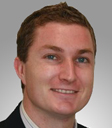 |
Kaine Rathbone, Senior Mechanical Engineeer, Aurecon
Kaine has considerable experience in mechanical condition monitoring over a wide variety of machinery including steam, gas and hydro turbines, boiler feed pumps, fans and conveyor drives. He specialises in root cause analysis (RCA), machinery dynamics and machine fault troubleshooting applying a variety of specialist testing methods. Kaine is an ISO category III vibration analyst and has a strong background in multi-shaft machinery rotor dynamics. He specialises in developing customised testing solutions to determine root causes of the most complicated machine problems. Kaine is experienced in vibration and oil analysis, thermography, strain gauging and multichannel data processing.
|
 |
| 15:15 |
Afternoon Refreshments & Networking |
|
| 15:30 |
Overall Machine Effectiveness & Asset Life Cycle Cost Modeling |
|
|
- The importance of overall machine utilization, machine reliability and asset life cycle cost
- Today’s machines and technology to implement performance engineering into overall equipment efficiency and cost saving modelling
- Integrating data from mining and heavy construction machines to predict and monitor root cause on overall machine effectiveness and breakdowns
|
|
 |
Burcin Ozturk, Principal Mining Applications and Performance Engineer, WesTrac Pty Ltd
Burcin Ozturk Demirhanoz has been in and professionally in mining and machinery industry more than 12 years in Europe and in Australia. She has completed her Bachelor of Science, Mining Engineering (ITU, Istanbul) and Master of Engineering, Mining Engineering, Mine Management and also Business Administration (UNSW, Sydney). She is currently working as a Principal, Mining Applications and Performance Engineer at WesTrac CAT and leading mining business and machine applications performance optimization projects for best practices at Western Australia region for some of the biggest mining companies in the world. She is also Six Sigma trained, Black Belt and Project Manager qualified. Her expertise is mainly mining and machine performance analysis and cost modelling applying data analytics and machine learning in engineering and business management.
|
 |
| 16:15 |
Maximizing the Value of Your Investments & Asset Management Strategy |
|
| Panel Discussion |
- The costs and opportunities of renewal or replacement – total cost of ownership, life cycle costing and risk approaches to asset investment
- Managing assets by criticality and interdependencies with other system components
- Value-driven maintenance – creating added value with an existing asset
|
|
 |
Moderator: Bill Sugden, General Manager (Qld), SIRF Roundtables
Bill has over 34 years of experience in Operations, Maintenance and Asset Management especially for in smelting, mining and petro/agri-chemical industry segments. His early career experience includes Production Manager, Engineering Manager, Production Superintendent, Maintenance Superintendent and various engineering roles at Incitec Pivot, BHP Billiton, South Blackwater Coal and Boyne Smelters (now part of Rio Tinto Aluminium). He also helped Ausenco Rylson establish its the North American business arm and led asset maintenance management audit and benchmarking assessments globally. He is now responsible for developing SIRF’s Industrial Maintenance Roundtables in Queensland, New South Wales and New Zealand.
|
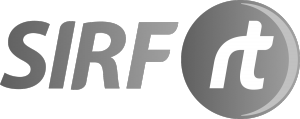 |
|
Panelist:
Romain Kabs, Asset Integrity Engineer, Wood Group Integrity Management
Burcin Ozturk, Principal Mining Applications and Performance Engineer, WesTrac Pty Ltd
Erick Alingcastre, Reliability Engineer – Systems, Caltex Australia |
|
| 17:15 |
Closing Remarks by Forum Chairman |
|
|
End of Day 1 |
|